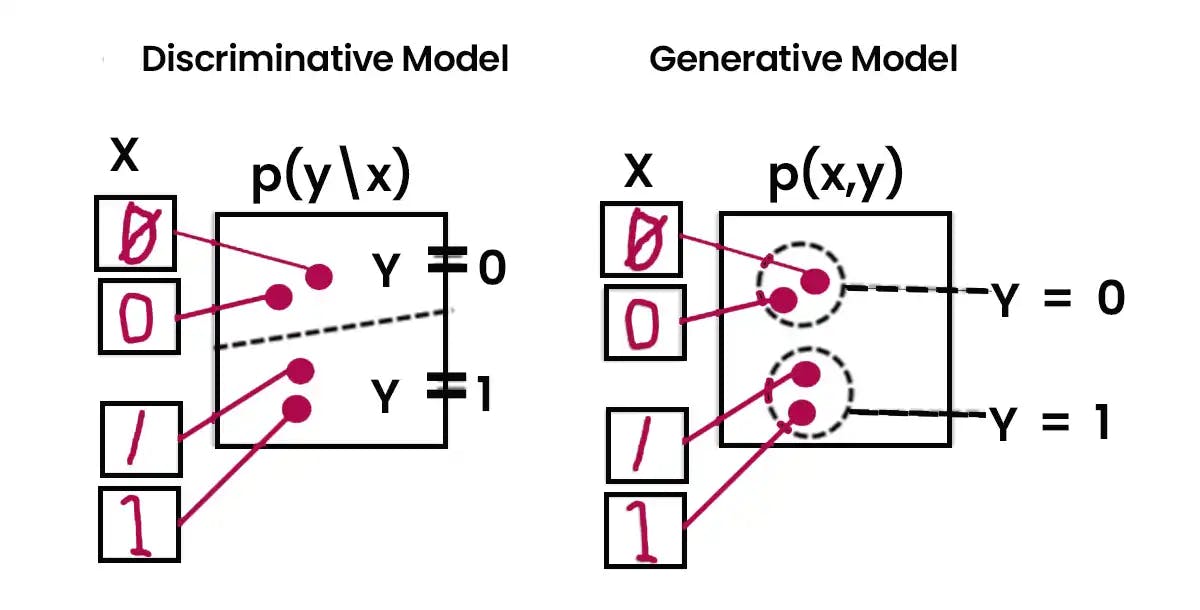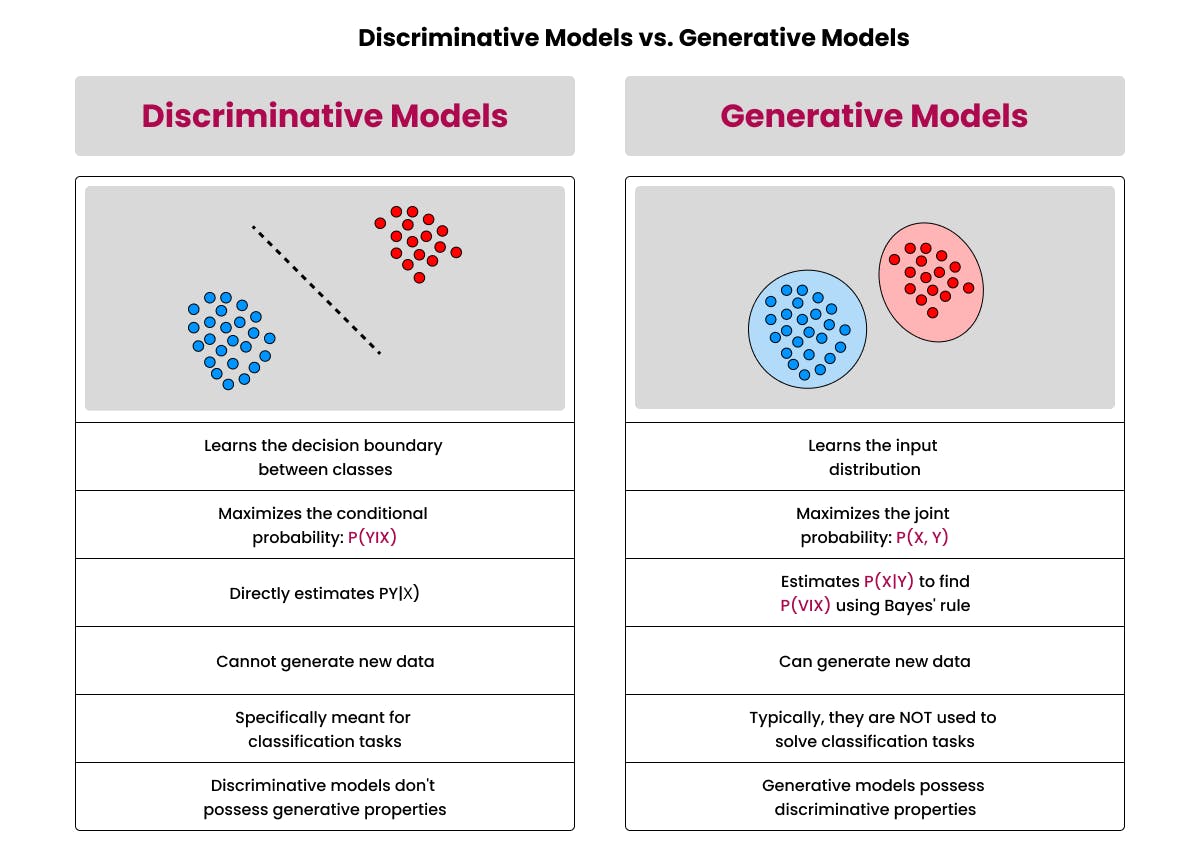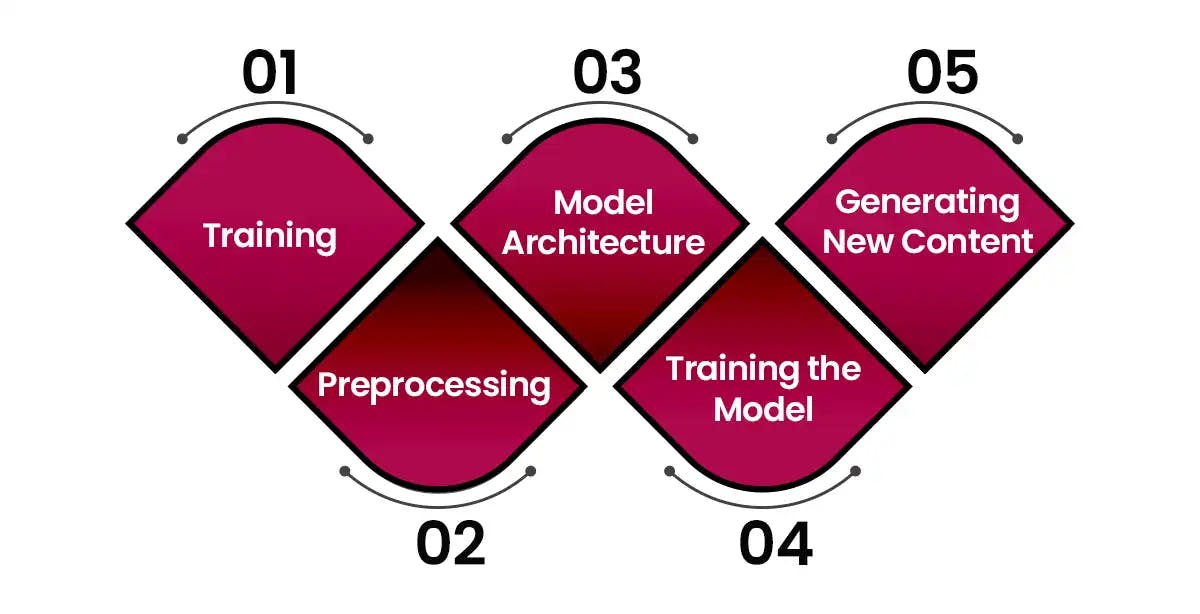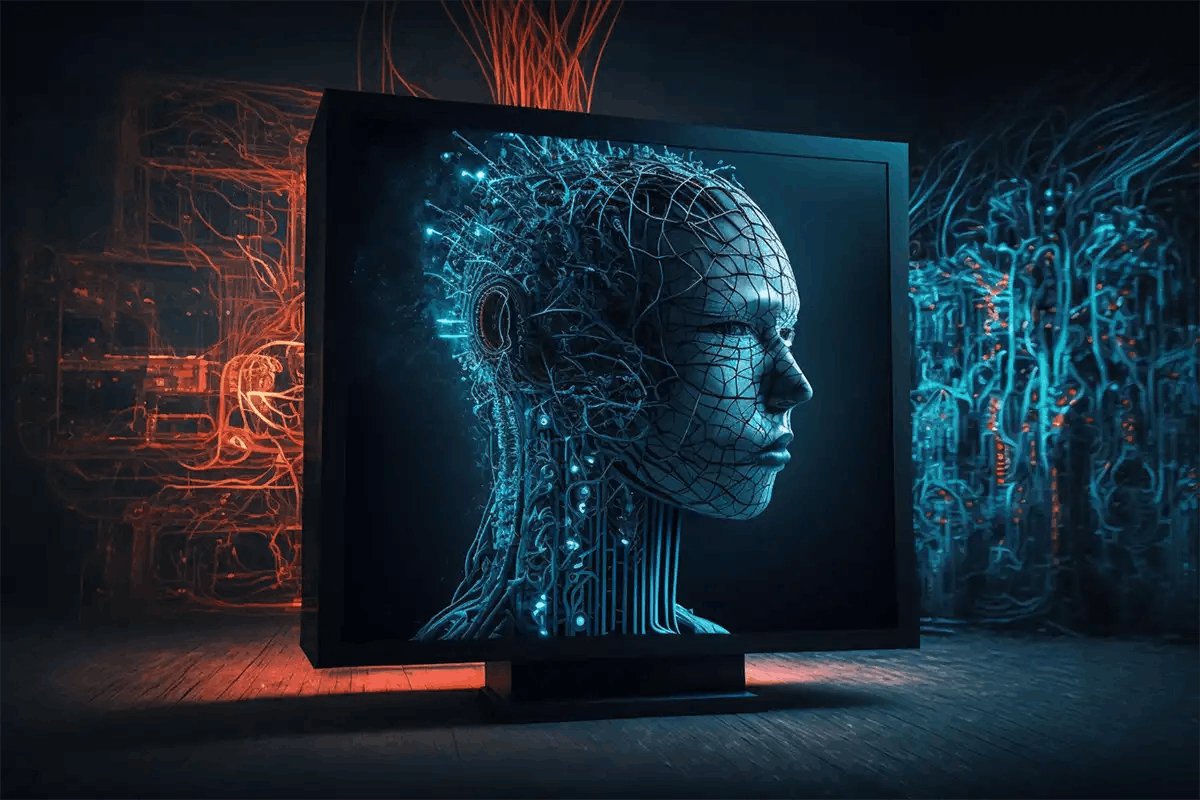
What is Generative AI?
We are living in an era, where almost every field has witnessed remarkable advancements mainly with the advanced technology of Artificial Intelligence (AI). The arrival of AI technology has opened a new vista of opportunities for tech-savvy developers and also for e-commerce businesses.
This article will delve into the captivating sphere of Gen-AI also known as generative AI. Readers of this article can explore the core concepts of AI, types of Gen-AI models, along real-world applications and use cases of Gen-AI. In addition to that, readers can gain some knowledge of the challenges and limitations of implementing Gen-AI technology together with the future trends and developers in Gen AI technology.
What is Generative AI?
Generative AI (Gen-AI) is an innovative variant of the existing Artificial Intelligence technology. Unlike the existing AI, this innovative technology, Gen-AI comes with a remarkable ability that allows users to generate a wide array of content types including audio/video, text, image, and so on.
Traditional AI systems perform their prediction operations based on recognized patterns. However, this Gen-AI system performs its prediction operations and creates new content informed by various content types like image, text, audio, and so on. Deploying Gen-AI will ease the workload of the users. Based on the statistical value posted in Salesforce, about 75% of the Gen-AI users prefer automating their routine tasks through generative AI technology along by using it for work communications.

When compared with traditional AI systems, this variant Gen-AI generates unique and accurate outputs with identical statistical properties. Since the gen-AI works with a large amount of relevant data, it can easily manage to interpret the range of user types and deliver the output by exceeding the user’s expectations.
Importance of Generative AI
In recent years, Gen-AI technology has emerged as a powerful force that transforms various industries of different verticals. The ability to convert the AI-generated content through a gen-AI system as more accessible and engaging is the most dynamic one.
Modern businesses prefer using this cutting-edge tech Gen-AI as the vital tool for marching forward with more accurate and sophisticated business operations. With much more capability and ability, this Gen-AI technology offers a wide benefit to businesses, particularly for eCommerce businesses.
Take a look over the impact created by Gen-AI on businesses.
- Innovation in content creation.
- Automates the daily routine complex process.
- Improves customer experience level by offering more personalization.
- Easy optimization of product designs.
- Adds more protocols to your existing cyber security measures.
- Streamlines all business operations with accurate statistical data.
- Helps businesses to achieve 100% digital transformation.

Types of Generative Models
Generative AI operates intricately through the utilisation of neural networks, which serve as the fundamental framework of artificial intelligence. These networks demonstrate a remarkable proficiency in discerning patterns within vast datasets and producing innovative and unique content. The training procedure entails fine-tuning the weights and parameters governing the connections among neurons, thereby minimising the disparity between anticipated and actual outputs. This iterative AI model empowers the network to assimilate insights from errors, progressively refining its accuracy in all successive iterations.
1. Explanation of Generative Models Variational Autoencoders
Much like Generative Adversarial Networks (GANs), Variational Autoencoders (VAEs) consist of two discrete neural networks—the encoder and the decoder. VAEs are designed to handle extensive datasets, skillfully condensing the information into a more compact representation. This compression facilitates the generation of novel data that closely mirrors the characteristics of the original dataset. The versatility of VAEs extends to various domains, including the synthesis of images, audio, and video content.
2. Generative Adversarial Networks (GANs)
Generative Adversarial Networks (GANs) stand as pivotal models within the field of generative AI, characterised by the presence of two discernible neural networks—the generator and the discriminator. The generator is responsible for crafting novel data, whereas the discriminator undergoes training to distinguish between genuine data sourced from the training set and data generated by the generator. This adversarial interplay compels the generator to produce data that closely approximates authentic data, resulting in noteworthy generative prowess.
Other Popular Generative Models
1. Transformers-based Models
Transformers exhibit exceptional prowess in capturing contextual nuances and relationships within sequential data, rendering them remarkably effective in tasks related to natural language processing. This proficiency extends to endeavours such as question answering, machine translation, and language modelling. GPT-3 stands as a prime illustration of a generative AI model based on transformers, showcasing remarkable abilities in comprehending and generating language.
2. Diffusion Models
A diffusion model helps to determine how the system needs to evolve or expand. Most often this model is mainly used to predict the expansion of the system in a network and create a scenario for better understanding and to precede things successively.
3. Restricted Boltzmann Machines (RBMs)
RBM is one of the well-known neural networks that have two layers for data processing. This model is mainly used for a better understanding of the distribution probability of the inputs within the system. Mostly this model is preferred in recommendation systems just like the movie suggesting applications where suggestions are made based on the user behavior or preference.
4. Large Language Models (LLMs)
This LLM is used to generate natural language texts by accessing a large volume of datasets that are gathered from various data sources. Mostly this LLM is widely used in applications that are specially designed to process various language processing tasks. LLM plays a major role in the development of the GPT–4 which is well-known for its renowned language models.
How do Generative Models Work?
Generative AI models employ neural networks to discern patterns and structures within existing data, enabling the generation of innovative content.
A significant advancement in generative AI lies in its ability to embrace diverse learning approaches, such as unsupervised or semi-supervised learning during training. This capability empowers organisations to efficiently utilise large amounts of unlabeled data, facilitating the creation of foundational models. Aptly named, these foundational models serve as bases for AI systems capable of undertaking multiple tasks.
Illustrative examples of foundational models include GPT-3 and Stable Diffusion, both offering users the power of language manipulation. For instance, applications like ChatGPT, derived from GPT-3, enable users to craft essays based on concise text requests. Conversely, Stable Diffusion empowers users to generate photorealistic images from textual inputs.

If you are a beginner and seeking an idea behind how Gen-AI works, well here are the step-by-step overviews that elaborate the working process of generative AI.
- Training
The training section fully depends upon the dataset. The dataset may be in any of the forms like text, or any other digital assets. The data model provided for training the AI system will be able to generate more accurate content. - Pre-processing
This is the step in which the data models are pre-processed to make it easier for the Gen-AI model. The process involves data conversion where the data formats are converted into pixels or numerical vectors for better understanding. - Model Architecture
Each Gen-AI model comes with its architecture, the most common one is a Generative Adversarial Network (GAN). GAN Architecture has 2 neural networks: a generator which is used to create content based on the provided input and a discriminator which is used for content evaluation and to provide feedback. - Model Training
Once the AI system is defined with suitable architecture, it needs to be trained with the pre-processed data. The neural networks of the architecture perform the content generation and content evaluation process to determine the reliability of the content. This enables the system to deliver accurate output from the real data. - New Content Generation
Once all the above-listed steps are completed, you can feed an input to the system and receive the output. For example, if you are generating a text-based gen-AI system, you can provide an image as input and you will receive a paragraph as the output.
Applications of Generative AI
1. Image Generation
Generative AI tools designed for image generation predominantly operate on a text-to-image basis. Users input textual descriptions outlining their desired images, and these tools meticulously process the information to create realistic visual representations. Users have the flexibility to specify various parameters such as subject, setting, style, object, or location, allowing the AI tool to generate stunning images tailored to their specifications.
Beyond the world of text-to-image tools, which excel in crafting realistic 3D models or original artwork, there exist tools dedicated to image enhancement and manipulation. These tools exhibit a range of functionalities, including:
- Image Completion
Image Generation AI can seamlessly generate missing elements within an image, whether it involves creating a lifelike background for an object, filling in gaps in pixels, or restoring torn sections of a photograph. - Semantic Image-to-Photo Translation
This process entails creating a version of an image using either a sketch or a semantic image as a reference resulting in enhanced visual quality. - Image Manipulation
These tools give users the ability to make changes to existing images by altering aspects, like style, lighting, colour, or shape while still maintaining the content's integrity. - Image Super-Resolution
Tools equipped with this capability enhance the resolution of an image without sacrificing specific details, enabling users to improve the quality of images, even those captured on surveillance cameras.
Prominent examples of Image-generation AI tools include Midjourney and DALL-E, showcasing the diverse applications and advancements within the world of generative AI for image creation and enhancement.
2. Manipulation Text Generation
Text Generation AI platforms like ChatGPT have become increasingly popular due to their models. These platforms are capable of generating a range of content, such, as articles, blog posts, and engaging dialogues. They can also perform tasks like summarising text, translating languages, completing sentences, and even creating website content automatically. These systems have been trained extensively on amounts of data to consistently produce current content.
The functionality of long-form content AI primarily relies on leveraging Natural Language Processing (NLP) and Natural Language Understanding (NLU) techniques within the world of AI. This enables the system to comprehend a given text prompt, understand context and intent, and generate intelligent responses to users. The training process involves exposure to sizable datasets to further enhance the authenticity and currency of the generated content.
Beyond the world of content generation, text-generative AI tools excel at a myriad of language-related tasks, such as answering questions, completing incomplete text, classifying text into different categories, rephrasing and enhancing content, and engaging in human-like discussions on various topics. Text generation models within the domain of generative AI find versatile applications in:
- Creative Writing
These tools can be harnessed to craft works of short-form content, including stories, song lyrics, or poems. - Conversational Agents
Generative AI models play a pivotal role in developing virtual assistants and chatbots capable of automatically responding to user inquiries and engaging in natural conversations. - Translation
Rapid and accurate translation of text from one language to another is a notable capability of generative AI models. - Marketing and Advertising
Generative AI proves invaluable in the creation of marketing and advertising materials, including product descriptions, ad copy, content for social media promotion, and catchy catchphrases.
3. Language Modelling Creativity
Generative AI is reshaping the landscape of language translation and natural language processing tasks. Language translation tools that are powered by AI exhibit exceptional accuracy in seamlessly converting text from one language to another. Simultaneously, AI language models like GPT-3 are spearheading a revolution in natural language processing, empowering applications such as chatbots, virtual assistants, and sentiment analysis with unprecedented levels of proficiency.
4. Art Generation
Generative AI has harnessed the vast potential of producing AI-generated art and visuals. Cutting-edge tools such as NVIDIA's GANs and StyleGAN have proven instrumental in crafting digital artwork and generating lifelike photographs. These AI-powered innovations showcase an impressive capacity to generate visually striking and realistic images. Artists and designers can now engage in collaborative exploration with AI, pushing the boundaries of artistic expression and co-creating mesmerising artworks.
5. Drug Discovery
Generative AI is playing a pivotal role in advancing drug discovery and healthcare research. AI models excel in analysing extensive datasets of molecular structures, swiftly identifying potential drug candidates with specific properties. This transformative application accelerates the drug development process, ushering in an era of faster and more cost-effective discoveries in the world of healthcare and data privacy.
Case studies of real-world applications
Generative AI stands poised to revolutionise various sectors, with notable applications in the following domains:
- Logistics and Transportation
Generative AI exhibits the capability to convert satellite images into accurate map views, which is used to unveil new locations. This technology proves as a key asset for logistics and transportation companies as it discovers the most efficient ways to navigate. - Travel Industry
In the travel industry, Generative AI contributes to facial recognition and verification systems at airports. By creating comprehensive images of passengers from various angles, this technology streamlines the identification and verification process for travellers. - Retail
With the help of Generative AI applications, retail businesses can deliver more personalised services or messages to individual customers and ease the customer communications process with the business. Also, this Gen-AI technology helps retail companies to detect fraudulent activities and safeguard their business data. - Supply Chain
Generative AI helps businesses to predict the rising demands on their specific products and services. This enables businesses to optimise supply chain operations easily and quickly. Apart from that, it empowers companies to increase their revenue margin by reducing inventory costs, and minimising waste or overstocking unwanted products. - Energy Sector
In the energy sector, Generative AI is pivotal for predicting solar and wind output based on weather data and production history. Furthermore, generalised AI allows companies to optimise their electricity distribution and transmission, by considering various factors like load balancing, and congestion management. Implementing optimised trading strategies with the help of Gen-AI allows companies to predict energy markets based on the data and market trends.
What Are the Challenges of Generative AI?
Let’s explore some of the AI Challenges associated with generative AI that mirrors the broader issues faced in the widespread acceptance of artificial intelligence. This section, however, focuses specifically on the intricacies linked to the application of artificial intelligence in the generation of novel data and information.
- Generative AI Data Security
Concerns over the security of generative AI data were underscored by the notable March 20 ChatGPT outage. During this incident, a flaw in an open-source library granted certain users access to the chat histories and payment-related information of others. The Italian National Authority for Personal Data Protection temporarily banned ChatGPT due to perceived privacy issues. - Generative AI vs. IP Rights
OpenAI's flagship products, ChatGPT and DALL-E, represent non-API consumer offerings. Users providing information as training data for these services may inadvertently contribute to the training of OpenAI's models. This dynamic raises questions about intellectual property rights concerning the data shared with such platforms. - Biases and Errors of Generative AI
The creation process of the models themselves introduces a substantial hurdle to widespread generative AI adoption. Whether it's analytical or generative AI, the content generated by these models amplifies any inherent flaws present in the initial data. Inaccurate or insufficient information, biased data, or preconceived notions fed into the models can lead to unintended consequences, sometimes manifesting in amusing situations. - Dependence on 3rd-Party Platforms
Paradoxically, businesses aiming to leverage generative AI technology may encounter difficulties due to the rapid evolution of the field. What if the model you choose is suddenly prohibited in your country, or a more cost-effective and powerful alternative emerges? Adaptability is crucial for staying abreast of changes in the generative AI landscape. - Limited Talent Pool
The heightened interest in generative AI has resulted in a considerable demand for skilled engineers, creating a shortage of qualified candidates. This shortage becomes even more pronounced when seeking professionals with practical experience in deploying specific models for commercial applications. Effectively addressing this talent gap is imperative for organisations seeking to harness the potential of generative AI.
What are the Limitations of Generative Models?
Training data and algorithms
To delve into some of the ethical considerations raised by artificial intelligence, it is imperative to gain a deeper understanding of the architecture underlying many prevalent large language models (LLMs).
Generative AI tools undergo training on extensive datasets, including:
- Common Crawl
A colossal 40TB dataset comprising 1.23 billion web pages sourced from various corners of the internet. - RefinedWeb
A substantial 2.8TB web-exclusive dataset encompassing five trillion tokens. - Research Journals
Inclusive of theses, books, reports, literary reviews, patents, and preprints, providing a diverse knowledge base. - Financial Datasets
Incorporating historical stock prices, graphical representations, charts, and predictive data. - Image Datasets
Encompassing ImageNet, COCO (Common Objects in Context), MNIST (a dataset for handwritten digits in digit recognition tasks), CIFAR-10, and CIFAR-100, designed for object recognition and classification. - Audio Corpora
Including UrbanSound, housing various audio clips, and LibriSpeech, a database of audiobooks utilised for automatic speech recognition.
Future Trends and Developments
- Robotic Process Automation (RPA)
Objective: Substituting repetitive tasks with AI to enhance efficiency and accuracy. Illustration: UiPath, a business automation tool renowned for its extensive integration capabilities. - AR and VR
Elevating virtual and augmented reality experiences through AI integration. Illustration: Roblox, a platform fostering user-generated, immersive 3D content with an impressive daily user base of nearly 60 million. - Natural Language Processing (NLP)
Proficiently comprehend and process human language for applications such as chatbots and voice assistants. Illustration: Monkeylearn, a no-code Generative AI tool designed for comprehensive text analysis. - Autonomous Vehicles and Intelligent Transport Systems
Advancing autonomous driving and transport systems through the integration of AI. - Illustration
Waze, is a platform offering personalised, real-time route recommendations based on user preferences.
Conclusion
AI has become inevitable in today’s e-commerce world; businesses need to be a step ahead by staying abreast of evolving technology to beat their competitors. Adapting to innovative Generative AI is one such thing businesses can easily outbeat their competitors and attract more target audience groups with better brand experience.
Looking to hire AI experts to develop custom AI solutions for your business, then consider approaching Codiste. We are the best generative AI services in digital innovations with our adept team of experts. Meticulously crafted, our robust Generative AI models and tools, akin to ChatGPT, DALL-E, and Midjourney, showcase the dedication of our AI professionals.
With a comprehensive understanding of diverse AI technologies, experts of Codiste offer tailored generative AI solutions precisely to your organisation's requirements. Your quest for top-notch generative AI development services, tailored to the unique needs of your business, concludes here.



AI in Customer Service: Trends & Predict...
Know more
A Deep Dive into How Agentic RAG Automat...
Know more
Is Agentic RAG Worth the Investment? Age...
Know more
